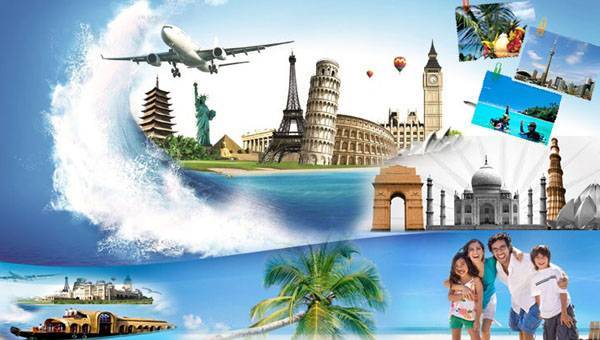The best time to travel depends on several factors, including your destination, weather preferences, budget, and the type of experience you’re looking for. Here are some key considerations to help you decide when to travel:
1. Destination’s Peak and Off-Peak Seasons
- Peak Season (High Season): This is when the destination is most popular, usually due to the best weather, holidays, or major events. Expect more crowds, higher prices for flights and accommodation, and popular attractions being busy.
- Best for: Travelers who want to experience the destination at its most vibrant or take advantage of ideal weather.
- Examples: Summer (June-August) in Europe, winter (December-February) in tropical destinations, or spring (March-May) in Japan for cherry blossoms.
- Off-Peak Season (Low Season): This is when fewer tourists visit, and prices for flights and hotels are typically lower. Weather can be less predictable, and some attractions or businesses may be closed, but you’ll often find better deals and fewer crowds.
- Best for: Budget-conscious travelers who don’t mind a little unpredictability or cooler weather.
- Examples: Fall (September-November) in Europe, or late spring/early summer (May-June) for places like South America or Southeast Asia.
2. Weather and Climate Preferences
- Tropical Destinations: The best time to visit tropical areas is during the dry season, which is typically between December and April for places like the Caribbean, Southeast Asia, and Central America. Avoid the rainy season (May-November) to minimize the chance of storms.
- Cold Weather Destinations: If you’re planning a winter getaway or to experience snow, the ideal time to visit places like Canada, Switzerland, or Japan’s ski resorts is between December and March.
- Moderate Climate Destinations: For regions with moderate weather, such as the Mediterranean or parts of the United States (like California), the best months are often spring (April-June) and fall (September-November), when the temperatures are mild, and there are fewer tourists.
3. Events, Festivals, and Holidays
- If you’re interested in experiencing a particular event, festival, or cultural celebration, timing your visit to coincide with it can make your trip special.
- Examples:
- Carnival in Brazil: February or March (before Lent)
- Oktoberfest in Germany: Late September to early October
- Cherry Blossom Season in Japan: Late March to early April
- Christmas Markets in Europe: December
- Examples:
- However, keep in mind that visiting during major events means larger crowds and higher costs for flights and accommodation.
4. Avoiding Crowds
- Shoulder Season: This is the period between peak and off-peak seasons. You’ll often find good weather and fewer tourists, meaning more affordable prices and a more relaxed experience.
- Best for: Travelers who want to avoid the high-season crowds but still experience good weather.
- Examples: Spring (March-May) or fall (September-November) in many popular destinations, like Italy, Spain, and Greece.
5. Budget Considerations
- If you’re traveling on a budget, aim for low season or shoulder season, as you can often find discounts on flights, accommodation, and activities. Traveling outside of major holidays and school vacation times also helps lower costs.
- Best times for budget travel: Late autumn (October-November), early spring (March-April), or the rainy season in tropical destinations.
6. Special Travel Interests
- Wildlife and Nature Lovers: If you’re traveling to see specific wildlife or natural phenomena, timing matters. For example, safari season in Africa varies depending on the country and wildlife patterns, while whale watching is best during certain months (e.g., November-April in Mexico).
- Hiking and Adventure: If you’re planning on hiking, trekking, or exploring nature, avoid extreme weather seasons (too hot, too rainy, or too cold). The best months for hiking are usually in the spring or fall, when temperatures are moderate and conditions are favorable.
7. Considerations for Long-Distance Travel
- Jet Lag and Travel Fatigue: If you’re traveling long distances, consider the effect of jet lag and time zone changes. Traveling during seasons that avoid peak tourism can make your trip more comfortable and less stressful, with shorter lines at airports and customs.
8. Local Holidays and Peak Travel Times
- Be aware of local holidays and school breaks in both your destination and at home. For example, Christmas, Easter, or summer vacation in many countries sees a significant increase in travelers. For some destinations, like Europe, the busiest travel times are during August when many locals take their vacations, and prices can skyrocket.
Best Times to Travel by Region:
- Europe: Best in spring (April-June) and fall (September-October). Avoid the summer months (July-August), which can be crowded and hot, especially in Southern Europe.
- Southeast Asia: Ideal from November to February (dry season), with fewer tourists and great weather. Avoid the monsoon season from June to October.
- USA: Best to visit in spring (March-May) or fall (September-November). Summer (June-August) can be very hot and crowded, especially in national parks.
- Australia/New Zealand: Best to visit during spring (September-November) or fall (March-May), when the weather is moderate and the crowds are fewer.
- South America: Ideal travel time varies based on region but generally December to March for Patagonia, June to September for the Amazon, and April to June for the Andes mountains.
- Africa: If you’re going on safari, the dry season (June-October) is best for wildlife viewing, especially in East and Southern Africa. However, for trekking (e.g., Kilimanjaro), January to March is often ideal.
Conclusion:
The best time to travel is influenced by your destination, preferences for weather, budget, and what kind of experiences you’re seeking. Whether you’re chasing festivals, planning for the perfect weather, or avoiding crowds, smart timing can enhance your travel experience. Typically, shoulder seasons (spring and fall) provide a good balance of pleasant weather, fewer tourists, and better prices.




